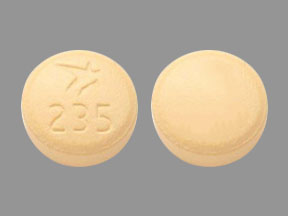Gilteritinib Disease Interactions
There are 2 disease interactions with gilteritinib.
Gilteritinib (applies to gilteritinib) hepatic/renal
Moderate Potential Hazard, Moderate plausibility. Applicable conditions: Renal Dysfunction, Liver Disease
The effect of severe hepatic (Child-Pugh Class C) or severe renal impairment (Clcr = 29 mL/min) on gilteritinib pharmacokinetics is unknown.
References (1)
- (2018) "Product Information. Xospata (gilteritinib)." Astellas Pharma US, Inc
Gilteritinib (applies to gilteritinib) QT interval prolongation
Moderate Potential Hazard, Moderate plausibility. Applicable conditions: Long QT Syndrome, Hypokalemia, Magnesium Imbalance
Gilteritinib has been associated with prolonged cardiac ventricular repolarization (QT interval). Perform electrocardiogram (ECG) prior to initiation of treatment with gilteritinib, on days 8 and 15 of cycle 1, and prior to the start of the next two subsequent cycles. Interrupt and reduce the dosage of gilteritinib in patients who have a QTcF >500 msec. Hypokalemia or hypomagnesemia may increase the QT prolongation risk. Correct hypokalemia or hypomagnesemia prior to and during treatment administration.
References (1)
- (2018) "Product Information. Xospata (gilteritinib)." Astellas Pharma US, Inc
Switch to consumer interaction data
Gilteritinib drug interactions
There are 508 drug interactions with gilteritinib.
More about gilteritinib
- gilteritinib consumer information
- Check interactions
- Compare alternatives
- Reviews (1)
- Side effects
- Dosage information
- During pregnancy
- Drug class: multikinase inhibitors
- Breastfeeding
- En español
Related treatment guides
Drug Interaction Classification
| Highly clinically significant. Avoid combinations; the risk of the interaction outweighs the benefit. | |
| Moderately clinically significant. Usually avoid combinations; use it only under special circumstances. | |
| Minimally clinically significant. Minimize risk; assess risk and consider an alternative drug, take steps to circumvent the interaction risk and/or institute a monitoring plan. | |
| No interaction information available. |
See also:
Further information
Always consult your healthcare provider to ensure the information displayed on this page applies to your personal circumstances.


